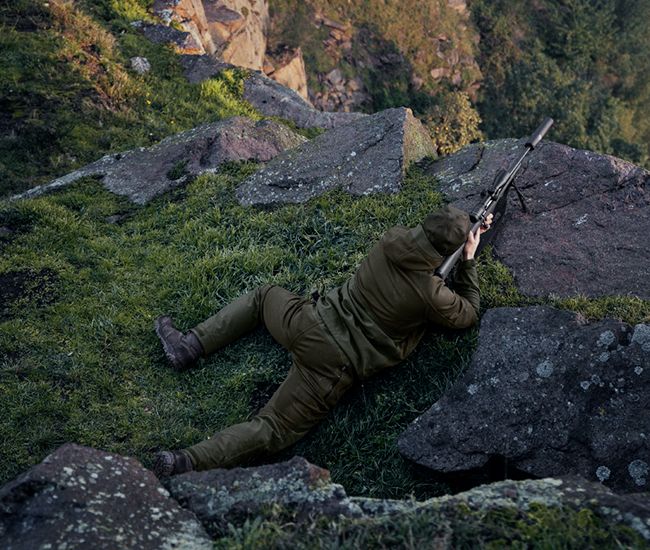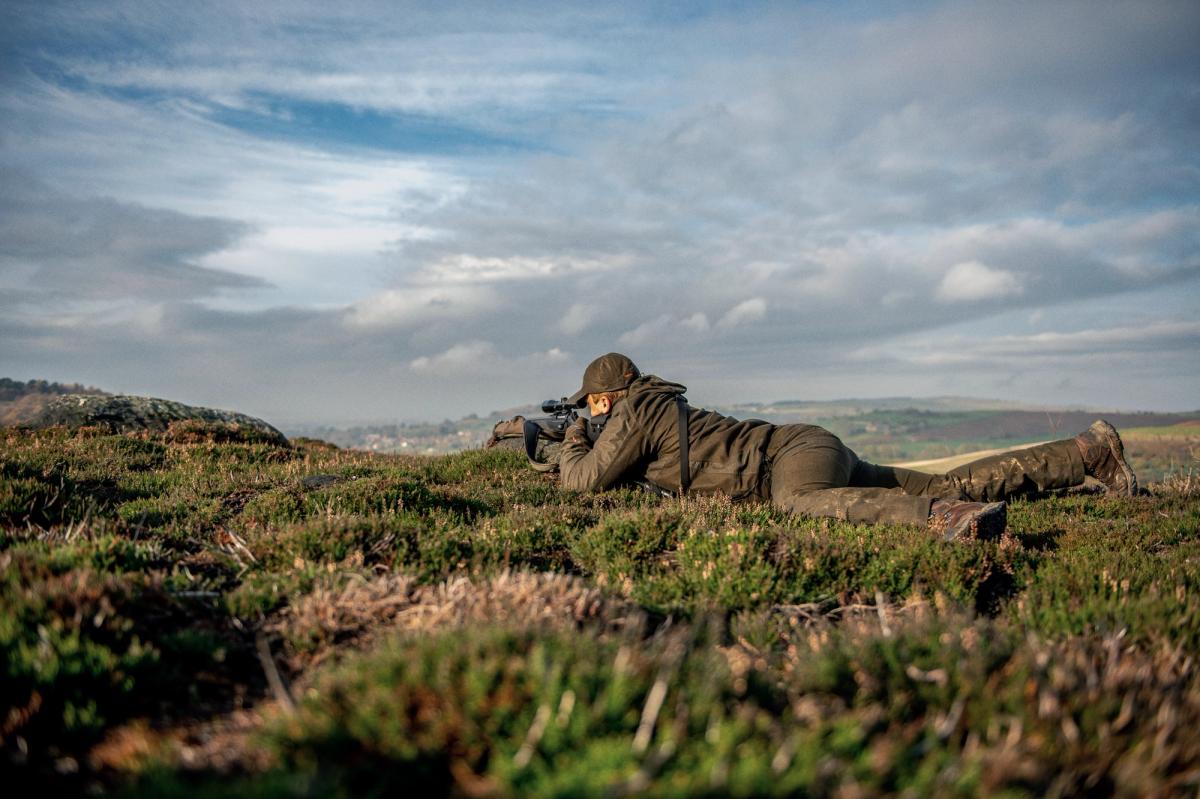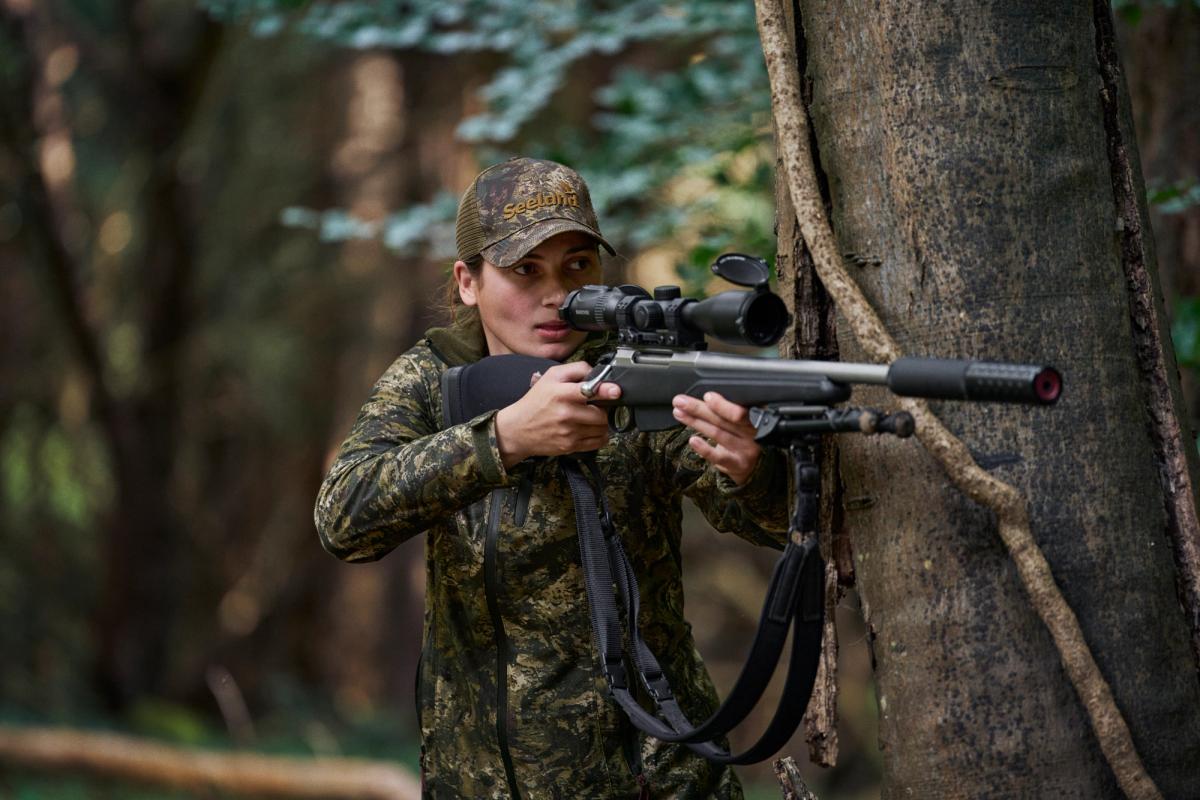The perfect shot: Rifle Shooting
5 Expert Tips on Rifle Shooting
The Perfect Shot: 5 Expert Tips on Rifle Shooting
Rifle shooting demands precision, control, and a deep understanding of the mechanics and principles behind each shot. Whether you're engaging in long-range shooting, hunting, or competitive shooting sports, achieving the perfect shot is a blend of art and science. Here are five expert tips designed to enhance your aim and overall effectiveness in rifle shooting.
It is important to note that it is not advisable to apply all the concepts mentioned in this article in real-life hunting scenarios, as the priority should always be to ensure a safe shot when targeting living animals. However, challenging yourself on the shooting range by practicing the concepts discussed will ultimately improve your marksmanship. Over time, this can extend the boundaries of what is considered a 'safe shot' in hunting situations, up to only a certain level, of course.
1. Establishing a Solid Shooting Position
The foundation of accurate rifle shooting is a stable shooting position. This can vary from prone, seated, kneeling, to standing positions, depending on the context and distance of the shot. The prone position offers the most stability for long-range shooting, utilizing the ground for support. Regardless of the position, ensure your body is aligned behind the rifle to manage recoil effectively, and use natural support or a bipod when possible to stabilize your shot.
In a hunting scenario, you will very often find yourself in a scenario where you utilize a bipod, a shooting stick, or some kind of other support beneath your rifle such as shooting from a high seat. This greatly increases the stability of the sight and makes it much easier to place an effective shot.
A crucial aspect of establishing a solid shooting position is understanding and applying the theory of reticle movement in relation to your breathing. When you have achieved a perfect shooting position, your reticle's movement should be primarily vertical (up and down) with each breath you take. This vertical movement is a natural outcome of proper body alignment and breathing technique, indicating that your body is uniformly expanding and contracting without shifting off target horizontally.
To harness this principle effectively, focus on minimizing lateral (side-to-side) movement by ensuring your rifle is snugly against your shoulder, and your body is squarely behind the weapon. This alignment allows the natural rise and fall of your chest during breathing to translate into a predictable vertical motion of the reticle. Practicing this alignment helps in maintaining the sight picture on the vertical axis, simplifying the task of timing your shot during the respiratory pause.

2. Mastering Breath Control
Breath control is crucial in minimizing movement and enhancing precision. The goal is to fire at the moment of natural respiratory pause — the brief period between exhale and inhale where your body is most stable. Practice breathing techniques that allow you to calmly hold your breath without creating tension in your body, and find the right moment to squeeze the trigger during that respiratory pause.
3. Perfecting your Sight Picture with a Scope
When shooting rifles in hunting scenarios, a scope is almost always used instead of traditional iron sights. The sight picture, in the context of using a scope, involves the proper alignment of the scope's reticle with the target.
Achieving a consistent and accurate sight picture with a scope is crucial for precision. This requires practice to quickly and accurately position the reticle on the target, ensuring the crosshairs are correctly centered and the target is in clear focus with a correct sight picture. A crucial aspect of a correct sight picture is ensuring there are no shadows around the edges of the sight picture, which indicates a proper eye relief distance. The eye relief is the distance between your eye and the rear lens of the scope, and it is essential to find the right balance to avoid a potential scope bite while ensuring a full, clear view without shadows.
It is essential to familiarize yourself with the specific characteristics of your scope, including its reticle type and magnification settings, as these factors greatly influence your ability to acquire a precise sight picture. Adjust the diopter for a sharp reticle image, and if applicable, use the parallax adjustment to bring the target into clear focus. Practice adjusting the scope to match various distances and lighting conditions, aiming to quickly and instinctively align the reticle with your target with minimal conscious effort.
Correct Eye Placement Relative to the Rifle Scope
It is important to maintain the correct distance from the eye to the rifle scope and to ensure the eye is positioned directly in line with the center of the sight picture. The easiest way to check this is to move your head back and forth and around, to make sure that the sight picture is completely round and that the "black rim" in the scope is evenly wide all the way around. If you look through the scope at an angle, it will affect precision. If you find that you need to lift your cheek from the rifle's stock to get the correct sight picture, you should invest in a cheek riser, as proper contact between the cheek and stock is also a prerequisite for an accurate shot. There are various types that can be attached or built into the stock, and even rifles where a cheek riser is already integrated into the stock from the beginning.
Using the magnification on a scope to your advantage:
All modern rifle scopes come with magnification capabilities. While this is a great help, if used correctly, it can also greatly reduce your accuracy if this is not used properly.
First of all it's a good idea to train and test your shooting at various magnifications to understand the impact it has on your shooting when adjusting the magnification in the scope.
One of the most common mistakes is cranking up the magnification even though shooting at fairly short distances: so that the target, such as the leaf on an animal, nearly fills the entire scope, but this is almost never a good idea. In general, it can be said that the more magnification you use and enlarge the sight picture, the more you also magnify your own shakes and movements. Shooting at high magnification requires way more skill in terms of your breath control, shooting position, and trigger control.
Therefore, it tends to result in "poorer" shooting and greater spread in shot groups – especially when shooting at short ranges (100-200 meters), where a high magnification is not really required.
It's advisable to practice shooting with as low a zoom level as possible, partly to avoid negatively affecting your shooting with shakes, and partly to be able to 'stretch your scope' over longer distances. If you have a scope that ranges from 3-9x magnification, and you can manage to shoot at 4x magnification, or less, at 100 meters, then you still have plenty of magnification 'to spare' if you need to shoot at a target that's farther than 100 meters. However, if you're already at 7 or 8x magnification at 100 meters, then you don't, and it takes just a small mistake to misplace a shot because it increases your own shakes and movements..
4. Understanding and Adjusting for Ballistics and Environmental Factors
Rifle shooting, especially at long ranges, requires an understanding of ballistics — how the bullet behaves once it leaves the barrel. Factors like bullet drop, windage, and environmental conditions (wind, humidity, temperature) significantly affect the bullet's path. Learning to read and adjust for these factors is key to improving accuracy. Use a ballistic calculator or app to understand how your specific ammunition behaves under different conditions, and practice under varied environments to gain experience.
An important notice here is that you will rarely be using this in a real-life hunting scenario, as shooting at a long range greatly increases the chances of placing a bad shot and wounding the animal. However, training at long range is an effective method to becoming better at rifle shooting - also when you're shooting short ranges on the hunt since the long range on the shooting range greatly excels all the topics in this article.
Your breath, your sight, your trigger control, and your shooting position becomes even more important when shooting at a distance - this is something that will also greatly benefit you at short ranges.
Therefore, challenge yourself with long distances when practicing on the range.

5. Trigger Control When Rifle Shooting
Trigger control is a critical aspect of rifle shooting, representing the fine line between an accurate shot and a miss. It involves the skilled manipulation of the rifle's trigger to release the shot without disrupting the alignment of the sights or the aim. Proper trigger control, combined with correct sight alignment, is essential for firing an accurate shot. This section delves into the mechanics and mental aspects of trigger control, highlighting strategies for both novice and experienced shooters.
Trigger control could easily justify a full article itself, however, here are some of the most important factors:
The Mechanics of Trigger Control
Given that the human mind is best suited to focus on one task at a time, it's crucial for shooters to hone their trigger control to the point where it becomes an instinctive part of their shooting process. This necessitates regular practice, especially through dry firing and continuous, deliberate training. The aim is to cultivate a level of proficiency where the movement of the trigger finger is automatic, requiring no conscious thought.
Trigger control is the precise action of moving the trigger to the rear, allowing the shot to break without disturbing the sight alignment or the aiming point. This process is both a physical and mental endeavor, requiring a delicate balance between conscious action and subconscious execution. For beginner shooters, the concept of a "surprise shot" is often introduced, emphasizing the importance of pulling the trigger in such a manner that the exact moment of the shot's release is not anticipated, thereby maintaining natural sight alignment.
Advanced Concepts in Trigger Control
As shooters progress, the emphasis shifts from the surprise shot to a more nuanced understanding of trigger control. The goal is to consciously decide when to fire, aligning this decision with the moment the rifle's sights settle on the aiming point. However, the physical action of pulling the trigger should become a subconscious effort, allowing the shooter to focus on maintaining sight alignment and concentrating on the target.
Uninterrupted Trigger Control is the preferred method, characterized by a continuous, steady pressure on the trigger until the shot is fired. This approach requires the shooter to apply initial pressure to counteract the trigger's weight as the rifle aligns with the target, ensuring the final pressure and shot release do not disrupt the aiming process.
Interrupted Trigger Control is employed in challenging conditions, such as high winds, where maintaining a steady aim is difficult. The shooter applies initial trigger pressure but waits for the perfect alignment with the target before completing the trigger pull. This method allows for adjustments based on the rifle's natural movement towards the aiming point, facilitating accuracy even under less-than-ideal conditions.
Finger Placement and Common Errors
Correct finger placement on the trigger is crucial and varies among shooters based on hand size and grip style. The trigger finger should allow for a straight rearward movement without affecting sight alignment. Common errors in trigger control include flinching, bucking, and jerking, all of which result from improper anticipation of the shot or recoil and can severely impact accuracy.
The Role of Follow-Through
Follow-through is the consistent application of shooting fundamentals after the shot is fired, ensuring no premature movement that could affect the bullet's trajectory. It also aids in self-correction, as shooters can analyze their shots relative to their intended aim and adjust accordingly.

Summary
Achieving proficiency in rifle shooting is a continuous process that combines understanding the technical aspects of your weapon with physical and mental discipline. By focusing on these critical areas — shooting position, breath control, sight alignment and picture, ballistics and environmental adjustments, and trigger discipline with follow-through — you'll significantly enhance your precision and consistency. Whether for competition, hunting, or personal improvement, these tips will help you advance toward the perfect shot.